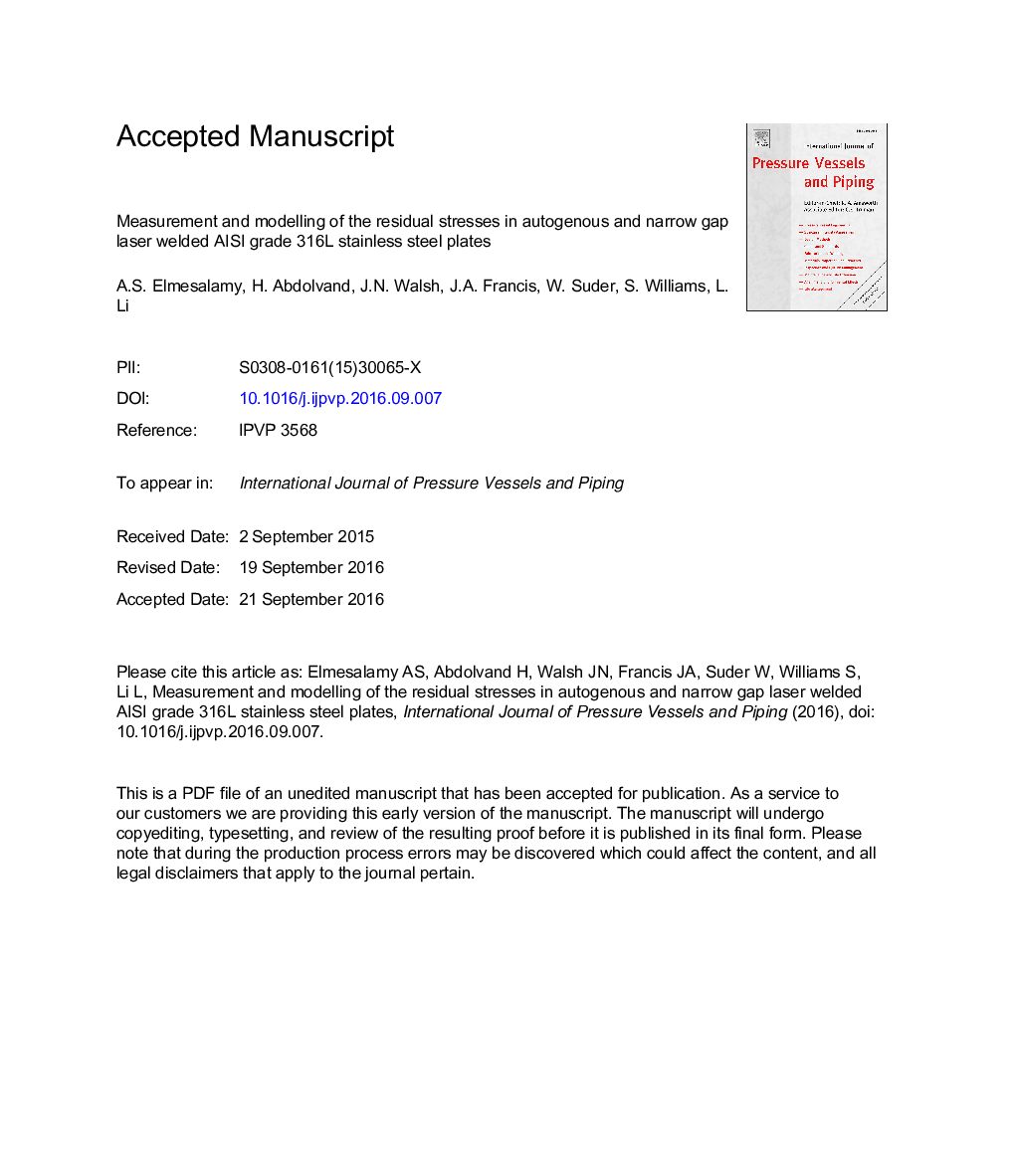| Article ID | Journal | Published Year | Pages | File Type |
|---|---|---|---|---|
| 5016925 | International Journal of Pressure Vessels and Piping | 2016 | 32 Pages |
Abstract
Thick-section austenitic stainless steels have widespread industrial applications, where stress-corrosion cracking is often of major concern. Problems tend to arise in the vicinity of welds, where substantial residual stresses often reside. This paper describes an investigation into the residual stresses in autogenous high power laser welds and narrow gap laser welds (NGLW) in 10Â mm thick AISI grade 316L steel plates, using both neutron diffraction and the contour method. The influences of laser power, welding speed and the time interval between weld passes on residual stress were analysed. For the NGLW process, finite element modelling was employed to understand the influence of thermal history on residual stress. The results for the NGLW technique show that the laser power has a significant effect on the peak value of residual stress, while the welding speed has a more significant influence on the width of the region sustaining tensile stresses.
Related Topics
Physical Sciences and Engineering
Engineering
Mechanical Engineering
Authors
A.S. Elmesalamy, H. Abdolvand, J.N. Walsh, J.A. Francis, W. Suder, S. Williams, L. Li,
